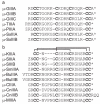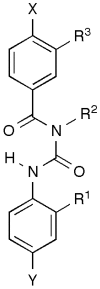Mu-conotoxins as leads in the development of new analgesics
- PMID: 20428082
- PMCID: PMC6257286
- DOI: 10.3390/molecules15042825
Mu-conotoxins as leads in the development of new analgesics
Abstract
Voltage-gated sodium channels (VGSCs) contain a specific binding site for a family of cone shell toxins known as mu-conotoxins. As some VGSCs are involved in pain perception and mu-conotoxins are able to block these channels, mu-conotoxins show considerable potential as analgesics. Recent studies have advanced our understanding of the three-dimensional structures and structure-function relationships of the mu-conotoxins, including their interaction with VGSCs. Truncated peptide analogues of the native toxins have been created in which secondary structure elements are stabilized by non-native linkers such as lactam bridges. Ultimately, it would be desirable to capture the favourable analgesic properties of the native toxins, in particular their potency and channel sub-type selectivity, in non-peptide mimetics. Such mimetics would constitute lead compounds in the development of new therapeutics for the treatment of pain.
Figures





References
-
- Norton R.S., Olivera B.M. Conotoxins down under. Toxicon. 2006;48:780–798. - PubMed
Publication types
MeSH terms
Substances
LinkOut - more resources
Full Text Sources
Research Materials

